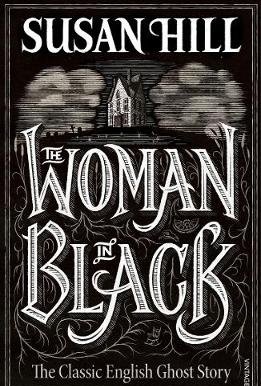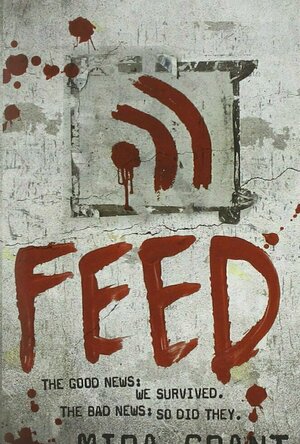Search

Clinometer + bubble level + slope finder (3 in 1)
Utilities and Productivity
App
This professional tool called Clinometer is the most precise (all you can get with some...

GarageBand
Music and Lifestyle
App
GarageBand turns your iPad, iPhone, and iPod touch into a collection of Touch Instruments and a...

Wind Meter
Weather and Sports
App
The Original Wind Meter ******* Wind Meter 5.0 - Supports iPhone 4 and 5, iOS 6, iOS 7, iOS8. ...
Hadley (567 KP) rated The Woman in Black in Books
Jan 1, 2020
Great paranormal aspect (1 more)
Good narrative
Overuse of some words (1 more)
Some scenes that could have been written better
In Susan Hill's novel, "The Woman in Black," she puts a small twist on an urban legend that is widely known to most - - - 'the lady in white,' which if you haven't heard of it, it's a spectral woman that is seen throughout the world, dressed all in white, only to show up in places of tragic events. This novel only has one main character, Arthur Kipps, a 23-year-old young man who is a lawyer in late 1800's England. He usually takes care of the conveyance of property leases, but one day, when his boss, Mr. Bentley, hands over a case and responsibility of finding a newly deceased's Last Will and Testament for their lawfirm, Kipp graciously accepts the new adventure without knowing that what is ahead will haunt him the rest of his life.
As Kipp soon finds out after traveling to the town just outside of the deceased's home, there is more to this woman, Alice Drablow, than just an old hermit- - - anytime her name is mentioned, people fall silent; the same goes for her home: Eel Marsh House. Kipp doesn't allow this to put him off from doing his job, but when he finds out about the marshes the house lives on, he is told that there are only certain times of the day that he can cross before the marshes become too flooded to cross. 'The Woman in Black' has spine-chilling moments and great descriptive details to make this a quick ghost story to be enjoyed.
Before Kipp heads off to the Eel Marsh House, he must attend Mrs. Drablow's funeral; he is accompanied by a man named Mr. Jerome, an agent that had dealt with Mrs. Drablow's property and land business while she was alive. While at the church, only one other person turns up for the funeral: a woman dressed all in black. Kipp takes note that this woman does not look well and, being the gentleman that he is, tells himself that he will offer his arm to her for stability after the funeral, but when they are leaving the church yard, the woman is suddenly gone. Kipp brings this up to Mr. Jerome, but he merely states that they were the only ones at the funeral.
The best scene to come is Kipp's first night at Eel Marsh House, where he experiences his first real scare in the ruins close by the house that is a dilapidated cemetery. " Suddenly conscious of the cold and the extreme bleakness and eeriness of the spot and of the gathering dusk of the November afternoon, and not wanting my spirits to become so depressed that I might begin to be affected by all sorts of morbid fancies, I was about to leave, and walk briskly back to the house, where I intended to switch on a good many lights and even light a small fire if it were possible, before beginning my preliminary work on Mrs. Drablow's papers. But, as I turned away, I glanced once again round the burial ground and then I saw again the woman with the wasted face, who had been at Mrs. Drablow's funeral. She was at the far end of the plot, close to one of the few upright headstones, and she wore the same clothing and bonnet, but it seemed to have slipped back so that I could make out her face a little more clearly. "
Over the entire course of the book, Kipp only visits the house one more time after this incident. The book has a good story, but it isn't flawless; first, there is the overuse of the word 'estuary,' which is practically used on every page whenever Kipp is at the Eel Marsh House or discussing it. It gets very tiresome. There is also instances of bad writing, where I feel that Hill could have delivered the scenes better than she did: Kipp changing his mind the very next sentence (if you read my reviews pretty regularly, you will realize that I can't stand it when a character contradicts themselves within a page or two), and then Kipp saying he can't do something, than directly after, does it. When you read this book, you will realize that Kipp is not the type of character that would change his mind on a whim.
Kipp is also an interesting character for a male set in this era. Most men in the late 1800's were stoic and refused to show an ounce of emotion in public, but Kipp is not afraid to have other men see him fall apart, and he is also very considerate of other people. There isn't much of a backstory on where Kipp came from or how his parents raised him, but it wasn't really needed for this story. Yet, we meet Kipp's step-children and his first and second wife, without too much of a story about them, so when certain things happen (to not give a spoiler), it doesn't really leave an impression.
There isn't much I can say that wouldn't give away what makes this story enjoyable to read. Overall, this is a good and quick ghost story that may cause shivers for some, but even if it doesn't, the Woman in Black is a must-read for lovers of the paranormal. To me, this seems like a good book to read while traveling because it's easy to pick up and set down without getting lost as to what was going on.
As Kipp soon finds out after traveling to the town just outside of the deceased's home, there is more to this woman, Alice Drablow, than just an old hermit- - - anytime her name is mentioned, people fall silent; the same goes for her home: Eel Marsh House. Kipp doesn't allow this to put him off from doing his job, but when he finds out about the marshes the house lives on, he is told that there are only certain times of the day that he can cross before the marshes become too flooded to cross. 'The Woman in Black' has spine-chilling moments and great descriptive details to make this a quick ghost story to be enjoyed.
Before Kipp heads off to the Eel Marsh House, he must attend Mrs. Drablow's funeral; he is accompanied by a man named Mr. Jerome, an agent that had dealt with Mrs. Drablow's property and land business while she was alive. While at the church, only one other person turns up for the funeral: a woman dressed all in black. Kipp takes note that this woman does not look well and, being the gentleman that he is, tells himself that he will offer his arm to her for stability after the funeral, but when they are leaving the church yard, the woman is suddenly gone. Kipp brings this up to Mr. Jerome, but he merely states that they were the only ones at the funeral.
The best scene to come is Kipp's first night at Eel Marsh House, where he experiences his first real scare in the ruins close by the house that is a dilapidated cemetery. " Suddenly conscious of the cold and the extreme bleakness and eeriness of the spot and of the gathering dusk of the November afternoon, and not wanting my spirits to become so depressed that I might begin to be affected by all sorts of morbid fancies, I was about to leave, and walk briskly back to the house, where I intended to switch on a good many lights and even light a small fire if it were possible, before beginning my preliminary work on Mrs. Drablow's papers. But, as I turned away, I glanced once again round the burial ground and then I saw again the woman with the wasted face, who had been at Mrs. Drablow's funeral. She was at the far end of the plot, close to one of the few upright headstones, and she wore the same clothing and bonnet, but it seemed to have slipped back so that I could make out her face a little more clearly. "
Over the entire course of the book, Kipp only visits the house one more time after this incident. The book has a good story, but it isn't flawless; first, there is the overuse of the word 'estuary,' which is practically used on every page whenever Kipp is at the Eel Marsh House or discussing it. It gets very tiresome. There is also instances of bad writing, where I feel that Hill could have delivered the scenes better than she did: Kipp changing his mind the very next sentence (if you read my reviews pretty regularly, you will realize that I can't stand it when a character contradicts themselves within a page or two), and then Kipp saying he can't do something, than directly after, does it. When you read this book, you will realize that Kipp is not the type of character that would change his mind on a whim.
Kipp is also an interesting character for a male set in this era. Most men in the late 1800's were stoic and refused to show an ounce of emotion in public, but Kipp is not afraid to have other men see him fall apart, and he is also very considerate of other people. There isn't much of a backstory on where Kipp came from or how his parents raised him, but it wasn't really needed for this story. Yet, we meet Kipp's step-children and his first and second wife, without too much of a story about them, so when certain things happen (to not give a spoiler), it doesn't really leave an impression.
There isn't much I can say that wouldn't give away what makes this story enjoyable to read. Overall, this is a good and quick ghost story that may cause shivers for some, but even if it doesn't, the Woman in Black is a must-read for lovers of the paranormal. To me, this seems like a good book to read while traveling because it's easy to pick up and set down without getting lost as to what was going on.
Writing (3 more)
Characters
Inconsistencies
Not a horror book, as marketed
What if a powerful virus was released in the air? What if you had to be tested for it every time you tried to walk into a building? Does this sound a little familiar? What if I told you this scenario was written about back in 2010?
In her novel Feed, writer Mira Grant gives readers this very scenario of an airborne, blood transferred virus; something that seems very familiar in today's environment and day-to-day living- - - just minus the zombies.
Grant started out as an urban fantasy writer known as Seanan McGuire, with her first full-length novel being Rosemary and Rue. She received the 2010 John W. Campbell Award for Best New Writer, as well as many other awards for her work in fiction. There are four books in the Newsflash series (Feed being the first of these).
We meet our main characters, Georgia and Shaun, while they're out in the 'field' filming some zombies for their blog. Shaun is the more careless one, as we witness him poking at zombies with his hockey stick. The two suddenly have to leave when the zombies become a pack. This is where it gets a little strange- - -Georgia explains to the readers that when zombies are in a pack, they become stronger and somehow smarter, but throughout the rest of the book, it's never really explained how this happens.
In this world, blogging and your view count determines your quality of life. Georgia and Shaun have spent years making their blog- - - After the End Times- - - into a popular blog. Every blogger's dream is to be picked to follow the campaign trail of any upcoming politician, and that is exactly what happens to our main characters. Unfortunately, this is when the book turns into a political thriller- - - this happens within the first fifty pages. Zombies end up taking a backseat from here-on-out.
We still get to learn about the virus (Kellis-Amberlee) throughout the book. We're told that any animal that weighs more than 40 pounds is capable of having the virus, and that some people are even born with a dormant-type of the virus inside of them, but this is also never explained in the entire story, at least in book one. Georgia makes it quite clear throughout the novel that she is completely against anyone owning pets that weigh over 40 pounds, but this is due-to her family having lost their younger son to a pet that went viral. This becomes extremely repetitive. Every time that an animal is brought up or seen, Georgia has to retell her stance on owning pets, when once or twice was enough to let the readers know where she stands on the subject.
There are moments of zombie attacks- - - such as after a political rally in a small town where Georgia and her crew are following Senator Ryman on his race to become President, when bodyguards are attacked by a small group of the undead, and Georgia and Shaun become cornered by a few of them- - - these scenes read as if to just keep the zombie trope going, not to actually make the story better. Grant continually repeats herself throughout the book, and because of this, the story didn't have to be as long as it is. Such as with these few zombie attacks, the reader never feels much danger for the characters. And I found that the characters turn out to just not be that likable.
One such character that had potential is Buffy; the backbone of the After the End Times blog. Scenes that were meant to make the reader care for her fell short. Unlike scenes with Georgia and Shaun, including the bond between them, is not felt with Buffy's scenes; she merely seems like a filler character to make certain parts of the story make sense by constantly disappearing and reappearing wherever need be.
Georgia does have an interesting quirk in the book. She harbors the dormant Kellis-Amberlee virus, which has effected her eyes. She can't be in bright lights because they give her blinding headaches, so she wears sunglasses nearly everywhere: " I collapsed onto our bed at the local four-star hotel a little after dawn, my aching eyes already squeezed shut. Shaun was a bit steadier on his feet and he stayed upright long enough to make sure the room's blackout curtains were drawn. "
The technical side of the story - - - the computer world and the electronic usage- - - in Feed is done pretty well. It's like the movie Nightcrawler meets 28 Days Later, but with a lot less zombies. We get to see the seedy underbelly of journalism- - - where bloggers are willing to do anything to get their view count high. Readers also get to witness how life is like living in a world held hostage by a virus - - -something that is very relatable today.
Georgia constantly reminds readers that she doesn't care about other people, and that Shaun is the only person she cares for- - - and, of course, the view count. She continually blames her lack of empathy on their adoptive parents, stating that they only took them in for the their own blog view counts. Oddly after such information, Shaun doesn't seem to be the immature one in the duo.
I haven't read the other three books, one which is a republishing of Feed, but from a different point-of-view. This story was disguised as a horror novel, but just ended up being a political thriller with some zombies thrown in for a much wider reading audience. The book skims over what life would be like after a devastating virus takes over, but focuses on what politics would be like. I can't recommend Feed as a horror novel; the tagline is also misleading: " 'The good news: we survived. The bad news: so did they. " Unless Grant was talking about politicians....
I didn't give the story a low rating because it wasn't exactly a horror book, but instead for these reasons: throughout the story, Grant repeats a lot of information that was explained earlier in the book (and only needed to be explained once); she also had inconsistencies throughout, sometimes even in the very next sentence. Adding things that needed to be explained which weren't, and the afterthoughts that broke up the flow of the story, I just couldn't enjoy it. But, if you like political thrillers, then you might like this one. I won't be continuing this series.
In her novel Feed, writer Mira Grant gives readers this very scenario of an airborne, blood transferred virus; something that seems very familiar in today's environment and day-to-day living- - - just minus the zombies.
Grant started out as an urban fantasy writer known as Seanan McGuire, with her first full-length novel being Rosemary and Rue. She received the 2010 John W. Campbell Award for Best New Writer, as well as many other awards for her work in fiction. There are four books in the Newsflash series (Feed being the first of these).
We meet our main characters, Georgia and Shaun, while they're out in the 'field' filming some zombies for their blog. Shaun is the more careless one, as we witness him poking at zombies with his hockey stick. The two suddenly have to leave when the zombies become a pack. This is where it gets a little strange- - -Georgia explains to the readers that when zombies are in a pack, they become stronger and somehow smarter, but throughout the rest of the book, it's never really explained how this happens.
In this world, blogging and your view count determines your quality of life. Georgia and Shaun have spent years making their blog- - - After the End Times- - - into a popular blog. Every blogger's dream is to be picked to follow the campaign trail of any upcoming politician, and that is exactly what happens to our main characters. Unfortunately, this is when the book turns into a political thriller- - - this happens within the first fifty pages. Zombies end up taking a backseat from here-on-out.
We still get to learn about the virus (Kellis-Amberlee) throughout the book. We're told that any animal that weighs more than 40 pounds is capable of having the virus, and that some people are even born with a dormant-type of the virus inside of them, but this is also never explained in the entire story, at least in book one. Georgia makes it quite clear throughout the novel that she is completely against anyone owning pets that weigh over 40 pounds, but this is due-to her family having lost their younger son to a pet that went viral. This becomes extremely repetitive. Every time that an animal is brought up or seen, Georgia has to retell her stance on owning pets, when once or twice was enough to let the readers know where she stands on the subject.
There are moments of zombie attacks- - - such as after a political rally in a small town where Georgia and her crew are following Senator Ryman on his race to become President, when bodyguards are attacked by a small group of the undead, and Georgia and Shaun become cornered by a few of them- - - these scenes read as if to just keep the zombie trope going, not to actually make the story better. Grant continually repeats herself throughout the book, and because of this, the story didn't have to be as long as it is. Such as with these few zombie attacks, the reader never feels much danger for the characters. And I found that the characters turn out to just not be that likable.
One such character that had potential is Buffy; the backbone of the After the End Times blog. Scenes that were meant to make the reader care for her fell short. Unlike scenes with Georgia and Shaun, including the bond between them, is not felt with Buffy's scenes; she merely seems like a filler character to make certain parts of the story make sense by constantly disappearing and reappearing wherever need be.
Georgia does have an interesting quirk in the book. She harbors the dormant Kellis-Amberlee virus, which has effected her eyes. She can't be in bright lights because they give her blinding headaches, so she wears sunglasses nearly everywhere: " I collapsed onto our bed at the local four-star hotel a little after dawn, my aching eyes already squeezed shut. Shaun was a bit steadier on his feet and he stayed upright long enough to make sure the room's blackout curtains were drawn. "
The technical side of the story - - - the computer world and the electronic usage- - - in Feed is done pretty well. It's like the movie Nightcrawler meets 28 Days Later, but with a lot less zombies. We get to see the seedy underbelly of journalism- - - where bloggers are willing to do anything to get their view count high. Readers also get to witness how life is like living in a world held hostage by a virus - - -something that is very relatable today.
Georgia constantly reminds readers that she doesn't care about other people, and that Shaun is the only person she cares for- - - and, of course, the view count. She continually blames her lack of empathy on their adoptive parents, stating that they only took them in for the their own blog view counts. Oddly after such information, Shaun doesn't seem to be the immature one in the duo.
I haven't read the other three books, one which is a republishing of Feed, but from a different point-of-view. This story was disguised as a horror novel, but just ended up being a political thriller with some zombies thrown in for a much wider reading audience. The book skims over what life would be like after a devastating virus takes over, but focuses on what politics would be like. I can't recommend Feed as a horror novel; the tagline is also misleading: " 'The good news: we survived. The bad news: so did they. " Unless Grant was talking about politicians....
I didn't give the story a low rating because it wasn't exactly a horror book, but instead for these reasons: throughout the story, Grant repeats a lot of information that was explained earlier in the book (and only needed to be explained once); she also had inconsistencies throughout, sometimes even in the very next sentence. Adding things that needed to be explained which weren't, and the afterthoughts that broke up the flow of the story, I just couldn't enjoy it. But, if you like political thrillers, then you might like this one. I won't be continuing this series.


